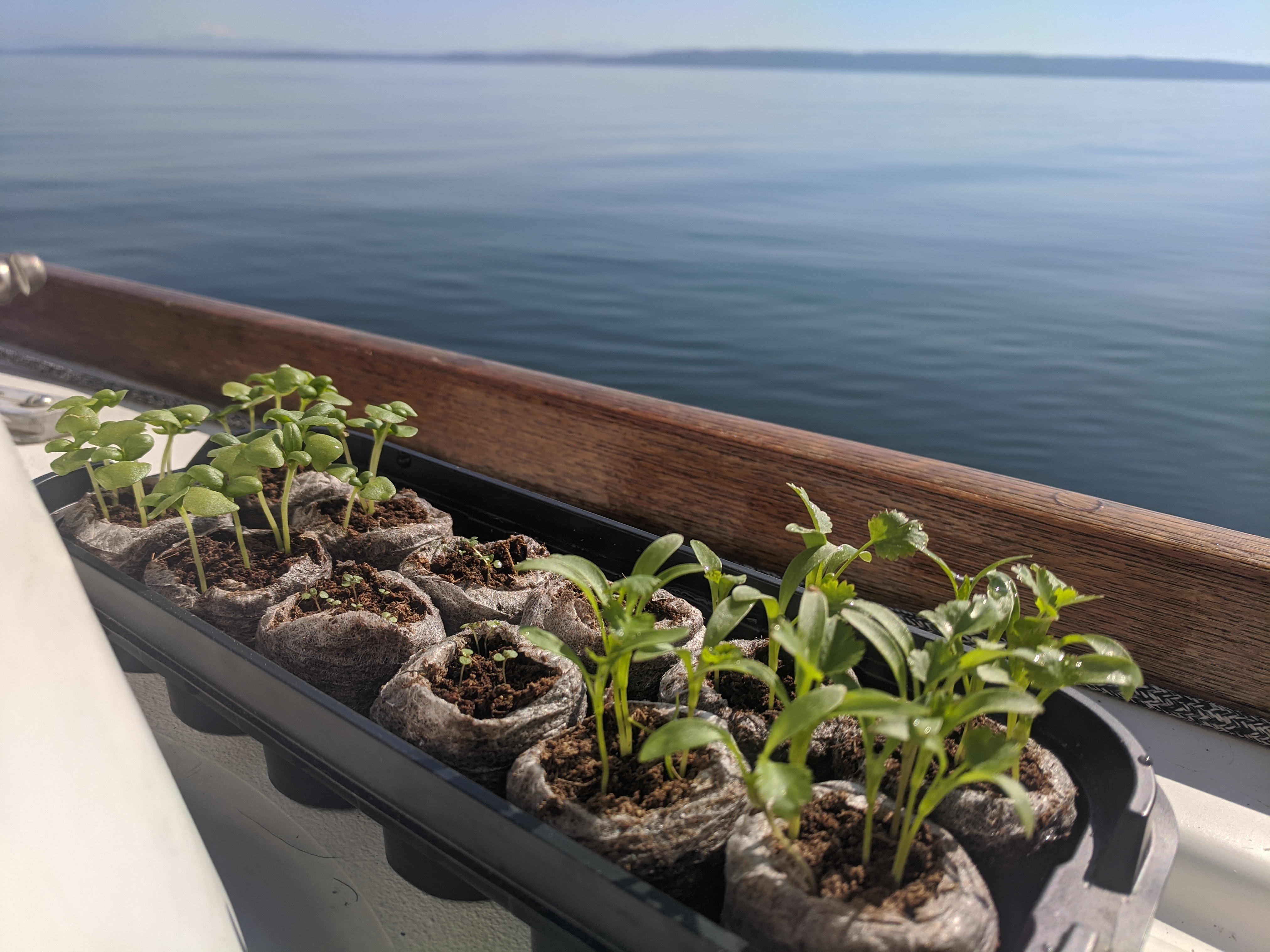We’ve been meaning to try growing herbs on our sailboat for a while now, and with the coronavirus pandemic sending us into full-on social distancing mode in March, this year was the perfect opportunity. We knew we might not be able to get groceries as often, and keeping store-bought herbs fresh for more than a week or so is very difficult on a boat anyway.
In past years we’ve bought some pretty sad cilantro in remote areas of British Columbia – by the time it makes it to the grocery store it’s spent weeks on trucks and boats, getting less fresh by the day, so it’s no surprise that it doesn’t last that long after we buy it.
With some planted herbs, we could harvest what we needed whenever we needed it. We chose to go with cilantro, basil, and mint. Cilantro is one of our most used herbs since we make Mexican food a lot (tacos, quesadillas, guacamole, enchiladas). Basil and mint were chosen because they’re easy to grow and don’t need much space or a large pot.
Other herbs or plants could be grown onboard too. For example, rosemary is easy to grow, but almost every roadside on islands in Puget Sound and the San Juans has that already, and we don’t typically use a lot of rosemary. Lettuce or tomatoes might be nice, but they require a lot of space and don’t produce very quickly.
There are a few unique challenges to overcome with growing plants on a sailboat:
- Sunlight – Sun can be rare at times in the Pacific Northwest spring, and a sailboat is constantly moving (spinning at anchor, or while sailing) so it can be challenging to keep the plants in the couple hours of sun we get some days in April and May. Many things can block the sun – our dodger, sails, mast, boom, etc. So until the plants got mature I usually moved them around to prime sun locations during the day when we were at anchor.
- Movement – our boat heels to 15-20 degrees going upwind (and we’re upwind a lot) – close to toerail in the water but not quite. So it’s important to be able to secure the plants so they don’t tip over and spill out dirt (which happened once while crossing Rosario Strait tide rips!).Our cabin top below the dodger was the best place to do this, but we could also stow them inside if we expected things to get really rough.
- Saltwater – Salt is death to plants, so it’s important to make sure no wave spray hits them. Our dodger is very watertight so this worked well for that purpose.

The seeds were started indoors in peat moss pods and then moved outdoors

